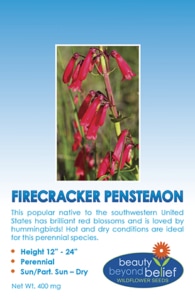Starting your Perennials NOW
Seed Starting
by Sandy Swegel
It’s Time.
Even here in snowy Colorado, it’s time. Even if some weird polar vortex has kept you housebound and you’ve lost track of what day it is…it’s time. Time for starting your perennials. Spring really is on its way.
One of the interesting aspects of a culturally liberal place like Colorado is that we’re very open-minded. There’s somebody celebrating just about every religion’s and culture’s holiday now. Two events this week remind me how human beings everywhere celebrate the hope for the return of Spring. First, there was a big Groundhog Day celebration for kids in one of our nature centers. Our groundhog day is actually a big fake because true groundhogs don’t live here. But we have a fine stuffed toy groundhog that is the center of a snowy celebration. Our other event was a Celtic festival for Imbolc, a Gaelic festival centered around St. Brigid or the pagan goddess Brighid, depending on your point of view. Both holidays are traditional days to forecast when Spring is coming. Whether Spring is coming sooner or later is all the same to a gardener. The point is that it is now the midpoint between Winter Solstice and Vernal Equinox and Spring is definitely on its way.
So you have two things to do:
First, you can start looking for the signs of Spring. A snowdrop erupting in a warm spot. A weed or two starting to green up. Keep your eyes open…you’ll see Spring if you look.
Second, you can start your perennial seeds. It’s too soon for warm season crops like tomatoes, but a great time to start slow starting perennial flowers and herbs. Perennials are often slower to germinate than annuals, but they are also more able to withstand cold temperatures. So if I start the seeds now (or in the next few weeks), I’ll have plants ready to go outside in a protected spot by April…when I’ll need the space to start annuals.
The first week of February is the time I traditionally start perennial seeds indoors under lights. My setup is pretty simple…a shop light dangling from a rod in my closet with a seed tray underneath. Here are the two kinds of seeds I’m starting this week:
Perennial Edibles
In the vegetable garden, herbs are the best perennials to start now. Think of winter hardy herbs: oregano, lavender, parsley, rosemary. It’s not the time for basil yet.
Wildflowers
Edibles are great, but one must never forget food for the soul—the beautiful wildflowers. If you think to start perennial flowers might be difficult, take inspiration from an article in Fine Gardening magazine about 10 Perennials Easily Grown from Seed. finegardening.com/design/articles/perennials-grown-from-seed.aspx
It might be frozen outside right now, but I look for Spring everywhere. The Groundhog searches for his shadow….I’m watching my seed tray for the first tiny sprouts!
Photo Credits:
finegardening.com/design/articles/perennials-grown-from-seed.aspx


